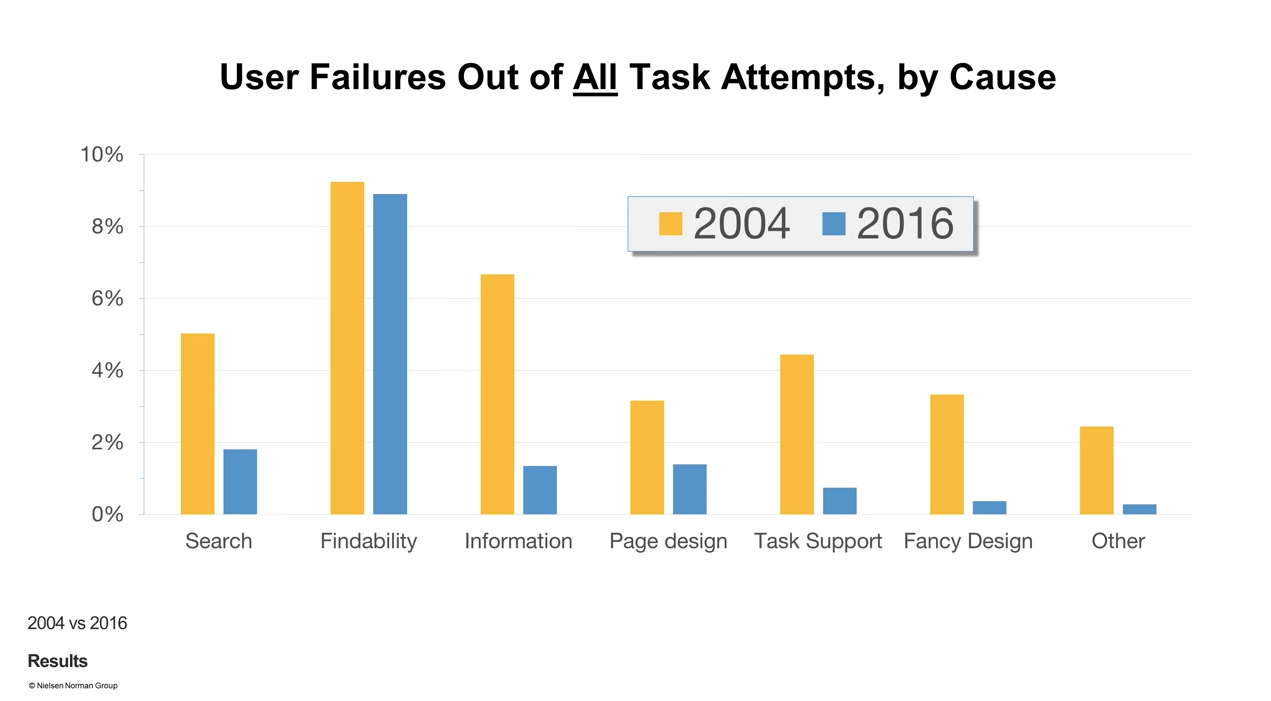UX Then and Now
The design and development of a digital experience has to be based on a clear understanding of users, their tasks and environments. Design should be driven and refined by a user-centred perspective, a perspective the design and development team use in all aspects of their decision-making, in order to make a site or app as usable as possible.
The Impact of UX
Jakob Nielsen is a leading expert on web usability. In 2006, he and Hoa Loranger published Prioritizing Web Usability. Using hundreds of real world user tests, their wisdom and experience, the authors created a guide to take websites to the next level and make usability a priority. Jakob Nielsen recently presented a study of the evolution in web usability. It compares data from 2004 to 2016. The session, Web UX 2016 vs 2004, clearly shows how much impact UX has had on the web. At the end of the day the digital experience that you create comes down to this question:
Can people do what they’re trying to do when they come to your website?
Nielsen’s data shows that the web has improved. Task completion rates have been increasing year over year, and overall failure rates are declining. There are still tremendous opportunities to improve. The study also raises some great questions too, like why is there a loss of information density when there has been a dramatic increase in screen size?  If usability is new to your organization, or you want to take things to the next level, this study by Jakob Nielsen is a must - Web UX 2016 vs 2014
If usability is new to your organization, or you want to take things to the next level, this study by Jakob Nielsen is a must - Web UX 2016 vs 2014
Main photo by Kiwihug on Unsplash




